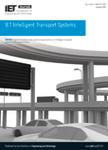版权所有:内蒙古大学图书馆 技术提供:维普资讯• 智图
内蒙古自治区呼和浩特市赛罕区大学西街235号 邮编: 010021

作者机构:Clemson Univ Dept Automot Engn 4 Res Dr Greenville SC 29607 USA Allison Transmiss Inc One Allison Way Indianapolis IN 46222 USA
出 版 物:《IET INTELLIGENT TRANSPORT SYSTEMS》 (IET Intel. Transport Syst.)
年 卷 期:2020年第14卷第13期
页 面:1824-1834页
核心收录:
学科分类:0808[工学-电气工程] 08[工学] 0823[工学-交通运输工程]
主 题:automobiles power transmission (mechanical) fuel economy hybrid electric vehicles energy consumption internal combustion engines road traffic road safety optimisation predictive control driver information systems road vehicles nonlinear model predictive controller established human-driver car-following models driving styles standardised driving cycles baseline driver-only case driver-desired inputs driver assistance eco-driving heavy vehicle radar-based predictive kinetic energy management framework driver assistance module internal combustion engine powertrain leading vehicle radar information ego vehicle predictive manner PKEM framework driver-pedal pre-filter interacting multiple model radar-based filter
摘 要:This study presents a radar-based predictive kinetic energy management (PKEM) framework that is applicable as an add-on driver assistance module for a heavy vehicle with an internal combustion engine powertrain. The proposed framework attempts to minimise fuel consumption by estimating the motion of the leading vehicle from radar information and optimising the inputs to the ego vehicle in a predictive manner. The PKEM framework consists of a driver-pedal pre-filter, an interacting multiple model radar-based filter and predictor of traffic object states, and a non-linear model predictive controller. The framework is integrated with established human-driver car-following models representing various driving styles and evaluated over a set of standardised driving cycles. The authors found that the energy-saving benefits can be as much as 23% over the baseline driver-only case with minimal compromises on travel time in urban environments, while the benefits are nearly negligible on the highway cycle. The results included also show the potential trade-offs in accommodating driver-desired inputs.